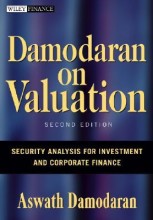Summary: Outlines & Highlights For Introductory Econometrics For Finance By Chris Brooks, Isbn... | 9781617447266 | Cram101 Textbook Reviews
- This + 400k other summaries
- A unique study and practice tool
- Never study anything twice again
- Get the grades you hope for
- 100% sure, 100% understanding
Read the summary and the most important questions on Outlines & Highlights For Introductory Econometrics For Finance By Chris Brooks, Isbn 9780521694681 | 9781617447266 | Cram101 Textbook Reviews
-
1 Introduction
This is a preview. There are 7 more flashcards available for chapter 1
Show more cards here -
What does it mean of the data are considered to be 'noisy'?
It means that is is more difficult to separate the underlying trends or patterns from random and uninteresting features
-
What are time series data?
Are data that have been collected over a period of time on one or more variables. They furthermore have a certain frequency.
-
What is an important requirement regarding frequency and the use of data in models?
It is a requirement that ALL data used in a model be of the SAME frequency of observation.
-
What is the difference between DISCRETE and CONTINUOUS data?
Discrete data can only take on certain values which are usually integers (e.g. # of people in a bus). Continuous data can taken on any value and are only limited by precision (e.g. interest bond in %).
-
What is the difference between CARDINAL, ORDINAL and NOMINAL numbers?
- Cardinal numbers are those where the actual numerical values have meaning and where there is an equal distance between the numerical values (e.g. scores, where 12 is twice as good as 6)
- Ordinal numbers are those where there is an order in the numbers (e.g. where 12 may be viewed as better than 6, but not necessary as twice as good - outcome of a race)
- Nominal numbers are those where there is no natural order in values. (e.g. phone numbers, or a list of things)
Each of these types of numbers requires different modelling approaches.
-
What is important in using the data for modelling?
Ensure that the data is unit free. For example: Don't use the actual asset prices, but rather calculate the returns. (e.g. if an annualised return were 10%, then investors know that they would have got back EUR 110 fro an EUR 100 investment).
-
What are the two methods for calculating returns from a series of prices?
- Simple returns
- Continuously compouded returns
- Simple returns
-
What is important in estimating the total return of stocks?
Always include any dividends in the calculations!
-
2 A Brief overview of the classical linear regression model
This is a preview. There are 14 more flashcards available for chapter 2
Show more cards here -
What are the names for 'y'?
- Dependent variable
- Regressand
- Effect variable
- Explained variable
-
What are the names for the 'x' s?
- Independent variables
- Regressors
- Causal variables
- Explanatory variables
- Higher grades + faster learning
- Never study anything twice
- 100% sure, 100% understanding
































